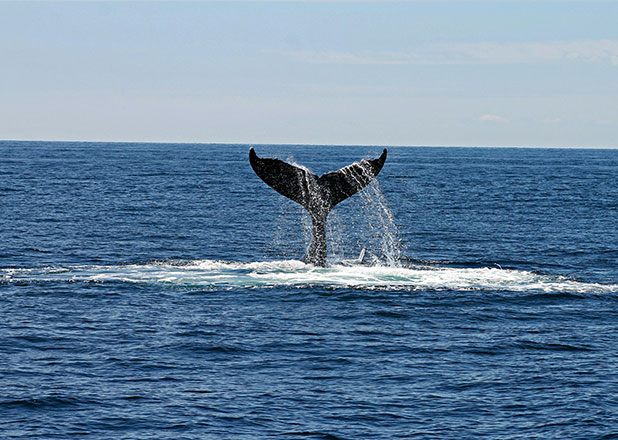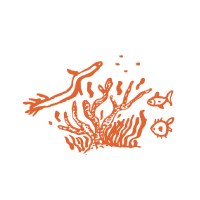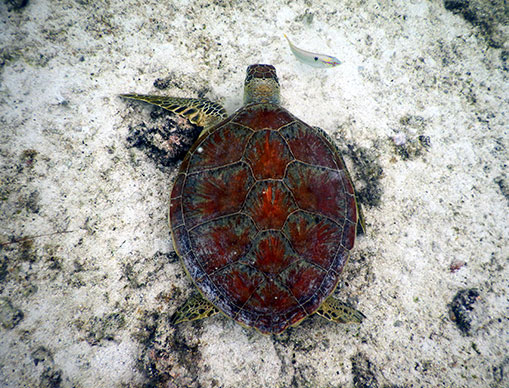
The humpback whale
From July to October, humpback whales pass along the coast of Mauritius. A majestic journey, best observed from afar — with wide-open eyes… and an open heart.

We admit it: at the Marine Discovery Centre, we have a soft spot for sea turtles!
So we set out to research and protect hawksbill and green turtles around Mauritius – two species classified as ‘in danger of extinction’. We are studying their numbers, migration and genetic heritage, and this information is helping us to identify areas that need protecting.

In Mauritius, swimming with turtles is prohibited by law, although some yachtsmen offer it to tourists without always measuring the impact of their activity.
They attract the turtles by feeding them. The result: the turtles develop a dependency on them, an imbalance in their diet, competition between individuals and the turtles are at risk of collision with boats.
Did you know?
The temperature of the sand during incubation influences the sex of the newborns? Warmer temperatures favour the birth of females. With rising temperatures due to climate change, there is a risk of an imbalance in the sex ratio.
Fun fact: females lay their eggs on the beach where they were born!
Take part in our science programme. All you have to do is take photos of the right and left sides of the sea turtles you see in the ocean and send them to us using the QR code that will be shared with you. Your photos will be added to our database.
At the Marine Discovery Centre, our preferred research method is photo identification using the TORSOOI software developed by Kélonia, one of our scientific partners.
Our team, formed by the Centre d'Étude des Tortues Marines (CEDTM) and Kélonia, has carried out:
• In 2021, we collected samples from turtles for genetic and isotopic analysis.
• Awareness-raising sessions with sea users, tourist operators, fishermen and fisherwomen, and schoolchildren.
• Focus groups with the local population to obtain information on sea turtles via a questionnaire.
• Studies (still in progress) on the abundance of the two species of turtle in the lagoons to the north and south-east of the island.
